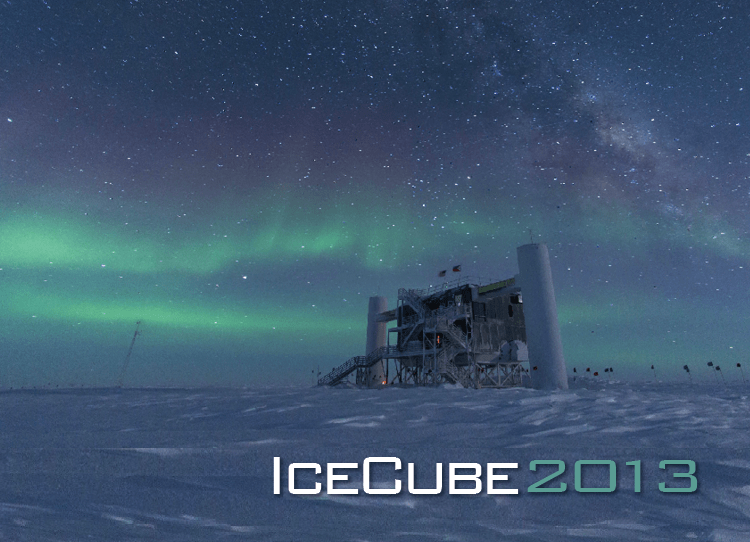2013 was, no doubt, a great year for IceCube. Scientific results reached a crescendo with a beautiful IceCube neutrino event gracing the cover of Science magazine on November 21. It was also the year that Prof. Olga Botner, of Uppsala University, was elected IceCube spokesperson, following Prof. Greg Sullivan from the University of Maryland. Also, four new institutions joined the IceCube Collaboration. And, last but not least, the NSF review committee resoundingly approved the collaboration´s efforts.

Fifteen new papers by the IceCube Collaboration were submitted or published in 2013. Among them, the first observation of high-energy neutrino oscillations, a new measurement of the all-particle cosmic-ray energy spectrum with IceTop, and several searches for dark matter, which allowed setting the most stringent upper limits yet on the neutralino mass for the spin-dependent hard decay modes,.
But, the highest impact paper came on November 21, when the IceCube Collaboration announced the observation of 28 very high-energy particle events, which constitute the first solid evidence for astrophysical neutrinos from cosmic accelerators. These results were published in Science and put IceCube in the headlines of hundreds of journals, news websites, and radio broadcasts around the world. By the end of 2013, Physics World, Scientific American, Nature and the editors of the Physical Review journals from the American Physical Society had also acknowledged that these results were opening a new era in astronomy.
All these outstanding research outcomes were only possible thanks to a devoted international collaboration, reaching over 275 members by the end of last year. The University of Toronto in Canada, Friedrich-Alexander-Universität Erlangen-Nürnberg in Germany, Sungkyunkwan University in Korea, and the Niels Bohr Institutet in Denmark joined IceCube in 2013, expanding the collaboration to 41 institutions in 12 countries.
However, the role of the IceCube detector should also be highlighted. The gigaton-detector at the Pole, which continuously takes data around the clock, is performing impressively. A few of its DOMs (digital optical modules) were recommissioned last year, allowing the detector to have more active sensors than in previous months. Moreover, IceCube’s uptime is high and continues to improve, running over 99% of the time during most weeks (except for a few days during the austral summer, when updates to electronics and IT equipment take place.)
IceCube is definitely performing well, but we are not the only ones who say so. A review panel for NSF visited Madison in May 2013. IceCube is run under a five-year NSF Maintenance and Operations grant, which goes through a major review in the middle of the project. The experts were impressed by both the detector’s performance and the scientific results, and IceCube’s future seems to be secure for years to come.
Now the question is: what does 2014 hold for IceCube? As the IceCube spokesperson, Olga Botner has said tremendous new results will be coming out, and finding new partners and funding for IceCube extensions will be the next challenge. Researchers are working on two possible scenarios: a low-energy extension, also known as PINGU, that will allow measuring the neutrino mass hierarchy and a high-energy extension to explore the cosmogenic neutrino flux. We’ll keep you posted!